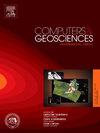广义eikonal解的物理-知情傅里叶-深度网络
IF 4.4
2区 地球科学
Q1 COMPUTER SCIENCE, INTERDISCIPLINARY APPLICATIONS
引用次数: 0
摘要
基于eikonal方程的地震走时精确计算在微地震定位和层析成像等地球物理学中有着广泛的应用。随着深度学习的发展,神经算子的出现使得神经网络能够学习偏微分方程(PDEs)的一般解。此外,物理信息神经网络(PINN)允许深度学习模型在pde的监督下学习,而不是仅仅依赖于训练标签。在这种情况下,我们提出利用深度算子网络(DeepONet)和傅立叶神经算子(FNO)相结合的混合模型,在eikonal方程的指导下模拟地震走时,从而得出一般解。我们将这种方法称为物理信息傅里叶-深度网络(PI-Fourier-DeepONet)。对角方程的损失函数采用有限差分格式计算。我们在4种不同类型的地震构造中对该方法进行了评估,结果表明PI-Fourier-DeepONet适用于广泛的复杂地质构造。本文章由计算机程序翻译,如有差异,请以英文原文为准。
Physics-Informed Fourier-DeepONet for a generalized eikonal solution
The accurate calculation of seismic traveltime based on the eikonal equation has numerous applications in geophysics, such as microseismic localization and tomography. With the advancement of deep learning, the emergence of neural operators has enabled neural networks to learn general solutions to partial differential equations (PDEs). Moreover, Physics-Informed Neural Network (PINN) allows deep learning models to learn under the supervision of PDEs rather than relying solely on training labels. In this context, we propose utilizing a hybrid model that combines the Deep Operator Network (DeepONet) with the Fourier Neural Operator (FNO) to simulate seismic traveltime under the guidance of eikonal equation, thereby yielding a general solution. We refer to this approach as the Physics-Informed Fourier-DeepONet (PI-Fourier-DeepONet). The loss function of the eikonal equation is calculated by finite difference scheme. We evaluate this method across four different types of seismic structures, and the results demonstrate that PI-Fourier-DeepONet is applicable to a wide range of complex geological structures.
求助全文
通过发布文献求助,成功后即可免费获取论文全文。
去求助
来源期刊

Computers & Geosciences
地学-地球科学综合
CiteScore
9.30
自引率
6.80%
发文量
164
审稿时长
3.4 months
期刊介绍:
Computers & Geosciences publishes high impact, original research at the interface between Computer Sciences and Geosciences. Publications should apply modern computer science paradigms, whether computational or informatics-based, to address problems in the geosciences.
 求助内容:
求助内容: 应助结果提醒方式:
应助结果提醒方式:


